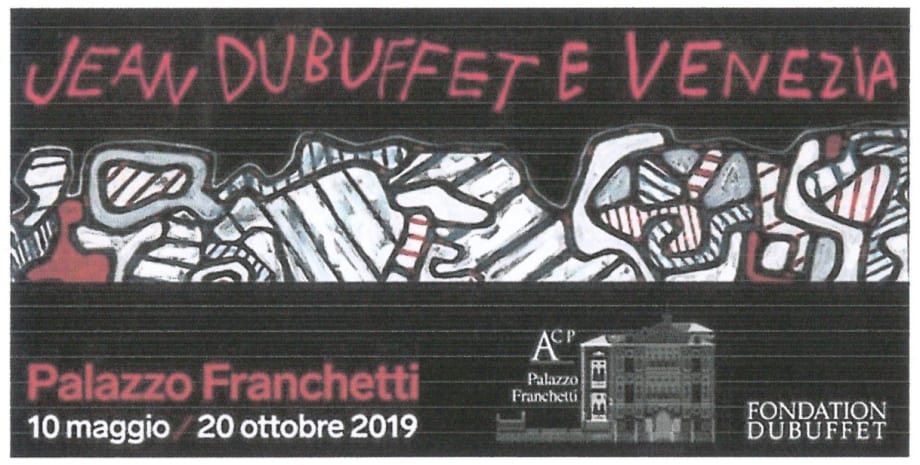There is a close link between one of the two most important post-war French artists, Jean Dubuffet, and Venice. The artist returns today the protagonist of a considerable review, curated by Sophie Webel and Frédéric Jaeger, which intends to pay homage and remember the importance of two famous exhibitions which, precisely in the lagoon city, have marked the artist's path: exhibitions at Palazzo Grassi in 1964 and at the French pavilion of the Biennale in 1984, important stages chosen by Dubuffet himself to exclusively present his most recent works of the time. The exhibition is housed in the history-rich halls of the noble floor of Palazzo Franchetti, a prestigious fifteenth-century building directly overlooking the Grand Canal and is organized by the company that manages the exhibition venue, ACP, with the precious collaboration of the Dubuffet Foundation.
The catalog is published by Five Continents Editions.
Through the memory of the historic Venetian exhibitions, the exhibition at Palazzo Franchetti presents the three most important cycles of Dubuffet's work: the Célébration du sol (The Celebration of the Sun) series, in which the artist deepens in the 1950s his research on the infinite effects of matter and to which they belong the Matériologies and the Texturologies, the Hourloupe cycle, the real << central nucleus >> of Dubuffet's research, as Daniel Abadie writes [...].
It is a crowded art, full of suggestions, almost noisy, as the very term of "Hourloupe" (from the French entourlouper, swindler) indicates, creator of an alternative universe capable of penetrating reality itself. Interesting sculptures also belong to this cycle, such as the monumental works located in the garden of the Palazzo, a rare green space in Venice that can boast an enviable direct view of the Grand Canal and therefore great visibility, a few steps from the Accademia Bridge. The eighties conclude the journey with the Mires series, well represented in the exhibition by about fifteen paintings which, with vibrant colors and fluid brushstrokes, make the physical limits of the picture yield. These are the works chosen by Dubuffet to officially represent his country at the 1984 Venice Biennale. To complete and enrich the exhibition, a studied selection of drawings, gouaches and documents bearing witness to the exhibitions of 1964 and 1984 is proposed, accompanied by photographs, letters and articles that do not neglect the artist's musical experiments. The exhibition therefore returns a complete portrait of a true experimenter who courageously broke away from traditions now perceived as arid and limiting to turn towards an emotional and psychic use of the pictorial medium.
